FLASHBACK! WHAT IT’S LIKE TO RIDE KEN ROCZEN’S HEP SUZUKI RM-Z450
THAT WAS THE YEAR THAT WAS! WE RIDE KEN ROCZEN’S HEP SUZUKI RM-Z450

Kenny’s departure from HRC Honda was dramatic, and ironically it led him back to his first love. Ken raced Suzukis as an amateur and during his first two years as a pro in the MXGP series. Ken found success with KTM in both Europe and the U.S. before going back to yellow again with RCH in 2015 and 2016. HRC Honda ponied up big money to get Kenny’s talent from 2017 through 2022. Ken was originally contracted with HRC through the 2023 season, but the agreement was terminated prematurely. Politics got in the way when Honda wouldn’t allow Ken to race in the pilot season of the FIM World Supercross series thatKen had already publicly committed to it. In the end, Kenny chose to leave HRC Honda and continue with his plans to race overseas, for which he was paid a pretty penny in start money. In 2022, Ken joined Yarrive Konsky’s Australian-based FirePower Honda team and won the abbreviated two-race WSX Championship.
KEN FOUND SUCCESS WITH KTM IN BOTH EUROPE AND THE U.S. BEFORE GOING BACK TO YELLOW AGAIN WITH RCH IN 2015 AND 2016. HRC HONDA PONIED UP BIG MONEY TO GET KENNY’S TALENT FROM 2017 THROUGH 2022.
During his two-race international adventure, Kenny’s exciting offseason of “finding himself” commenced. He flew from the UK to Spain to ride the Stark Varg electric bike, then flew to California to race the Red Bull Straight Rhythm on a Pro Circuit-built Yamaha YZ250 two-stroke before getting back on a jetliner and flying to Australia for the second and final World Supercross race on his FirePower Honda. Next, he flew to North Carolina to test the new 2023 Yamaha YZ450F with the privateer ClubMX Yamaha team, and then he went to California to test the HEP Suzuki RM-Z450, as well as a Pro Circuit-built Kawasaki KX450. Kenny went into shootout mode and documented most of his adventures on his Instagram account, allowing the world to see his test rides as a free agent.
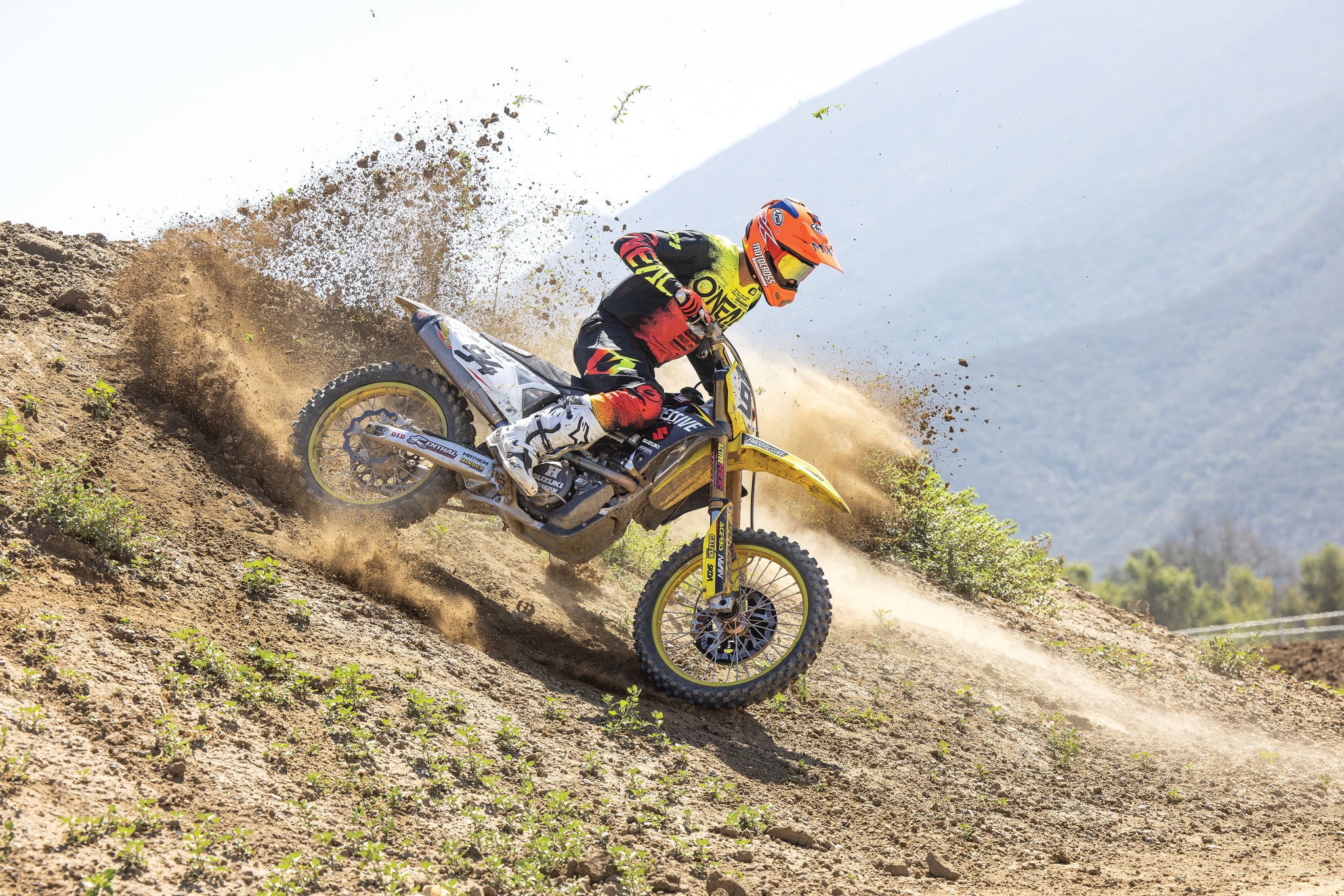
WHY DID KEN ROCZEN CHOOSE HEP SUZUKI?
Riders of Ken’s caliber are rarely ever without a ride. Usually, they’re locked in from one factory contract to the next, and even after their careers are over, they’re usually contractually tied to a brand. In this case, Ken and Honda split at the last minute, and the stars aligned for HEP Suzuki, which is owned by Dustin Pipes and his family. The privately funded, Suzuki-supported team had recently hired Larry Brooks away from the BarX Suzuki 250 team in hopes of building a program that could host a top-caliber rider like Ken in 2024.
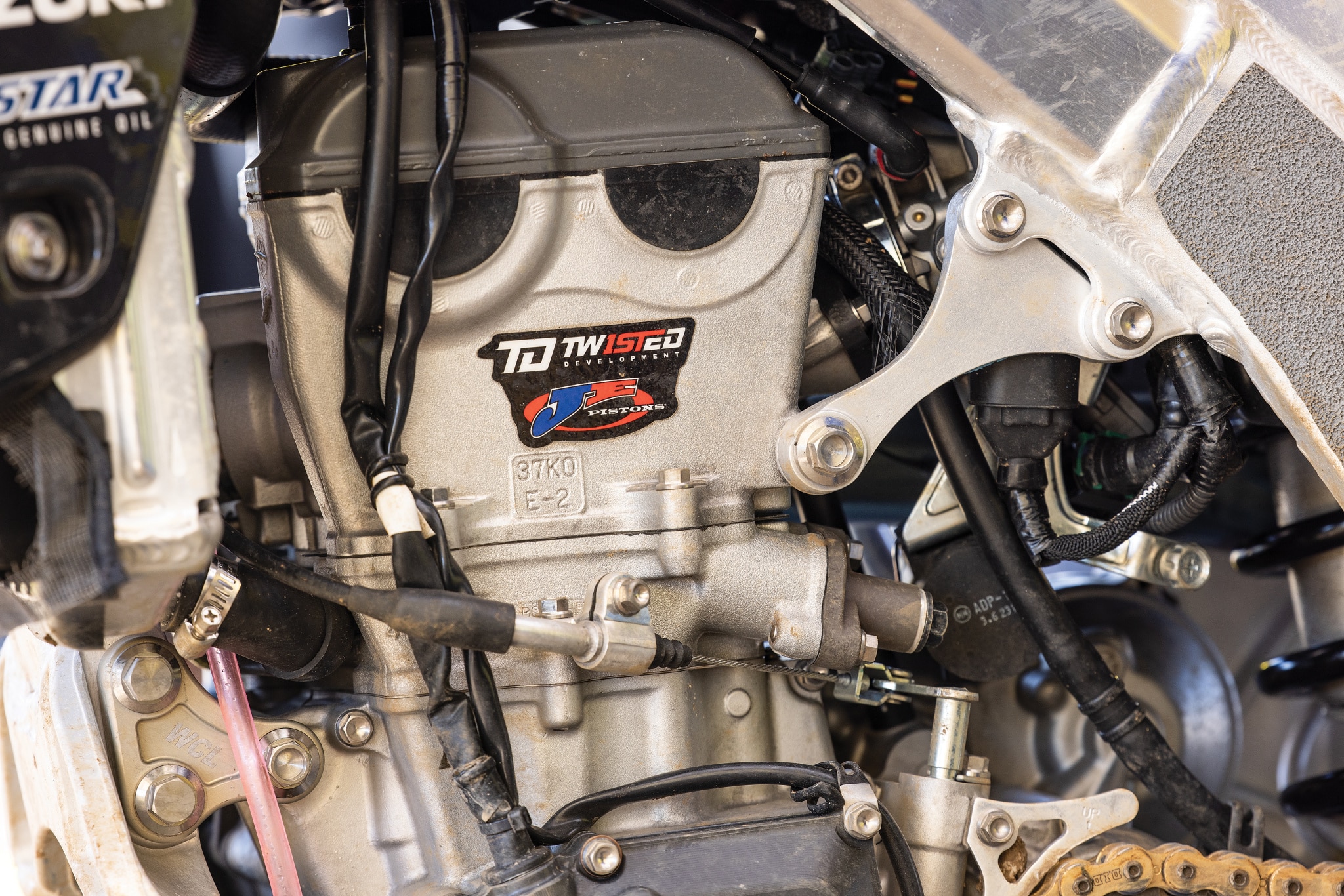
Surprise! After Ken’s exotic round-robin test runs, Ken ultimately chose the HEP Suzuki team, explaining that he felt right at home on the bike from his first lap. The team got its breakthrough shot with a National Championship-level rider one year earlier than they planned. Being a much less corporate team, HEP is more flexible than factory Honda, which Ken liked, but the big holdup was that they didn’t have the money, experience or infrastructure. Not to mention that the bike they had to offer Ken, the 2023 Suzuki RM-Z450, was outdated. All the negatives added up to a positive for Ken Roczen. He had been in the pressure-packed factory team system since he was 15 years old. He wanted out! The HEP Suzuki deal offered a no-pressure chance to ride a bike that he liked without any strings attached. Surprisingly, the pressure was off of Ken’s shoulders. If he didn’t win on Suzuki, critics would point to the bike rather than the rider. But, if he did win, it would be counted as a legendary comeback.
Ken chose Suzuki, earning the nickname “Kickstart Kenny” because of the freedom they gave him over his bike setup and race schedule. He was able to race the FIM World Supercross series with this team, and he got to be the star rider for Suzuki instead of being a B-team rider at Honda, Kawasaki or Yamaha.
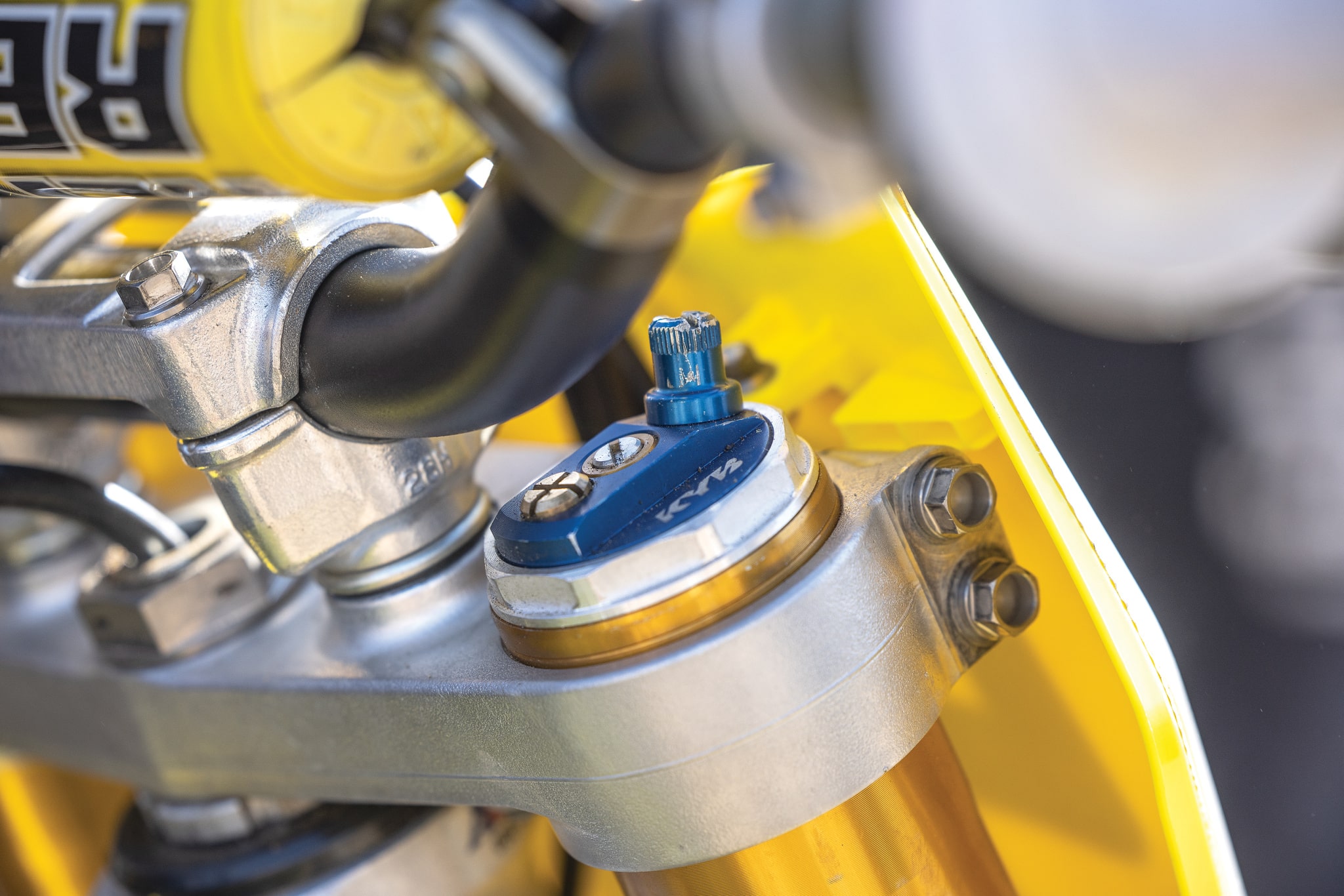
HOW STOCK IS KENNY’S BIKE?
Surprisingly, Ken Roczen’s RM-Z450 is more stock than you’d think. He uses a stock linkage, stock levers and stock clutch perch, stock handlebar mounts, stock chain guide, stock chain slider and roller, and his rear brake is stock (with Galfer steel braided brake lines front and rear). He does use a factory Nissin front brake, but the pads front and rear are stock, as well as the master cylinders. Ken uses stock Suzuki triple clamps; however, they are actually off the RM-Z250 and not the 450. The reason is the lower clamp on the RM-Z250 is more above the deck, giving it more flex and a feel that he prefers. The top clamp and steering stem are all the same as on the RM-Z450.
DocWob provided the titanium bolts that are all over Kenny’s bike, but he doesn’t run titanium axles. Kenny prefers the feel of the Suzuki axles and the stock swingarm pivot bolt because they flex more than titanium. As for the rear axle blocks, those are made by Pro Circuit.
KEN CHOSE SUZUKI, EARNING THE NICKNAME “KICKSTART KENNY” BECAUSE OF THE FREEDOM THEY GAVE HIM OVER HIS BIKE SETUP AND RACE SCHEDULE.
What’s done to the chassis? Ken Roczen’s suspension saga has been unique, and we think this specific journey is one reason Ken has re-signed with the HEP Suzuki team for 2024. They gave him total freedom to try anything and everything he needed to be comfortable. He started the year on Showa suspension with Dave Cruise, who worked with the team last year. Based on Ken’s recent experience using Factory Connection suspension on his Honda CRF450 for the World Supercross rounds in 2022, he got back in touch with Factory Connection and used their suspension for a few races in the middle of the Supercross season before eventually linking up with Kyle Chisholm’s longtime suspension tech Matt Andruk of Active Ride Suspension. Matt was willing to go outside the box with his settings, and Kenny has talked openly about his great relationship with Matt and their long days of testing suspension at the practice track. The team used Kyle Chisholm’s feedback to develop the bike that ultimately lured Kenny back to yellow, and Kyle received a lot of credit and praise from Larry Brooks for his testing skills. Once again, Kyle’s recommendation (this time for a new suspension tech) helped Kenny immensely.
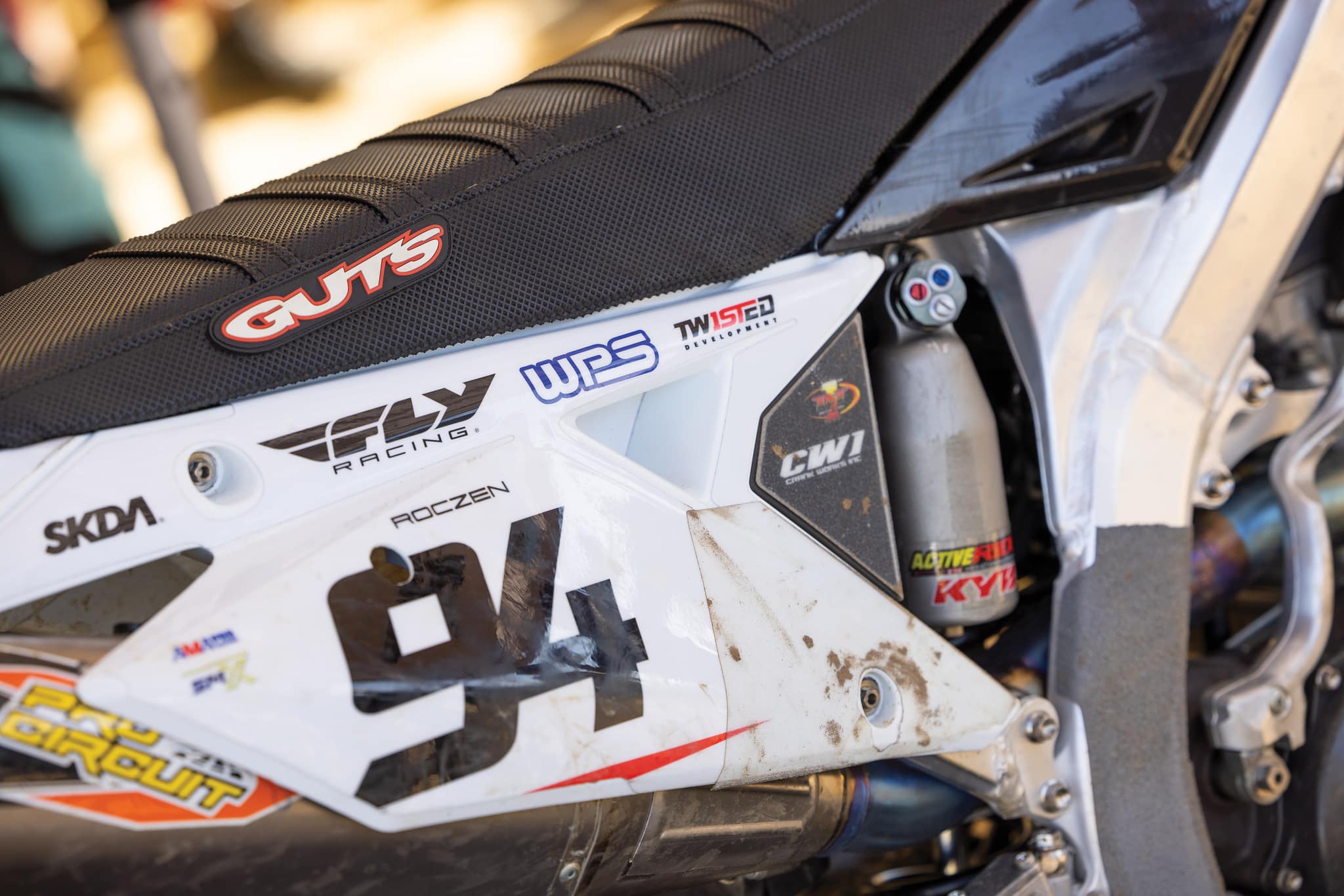
There are a few differences between Ken’s outdoor and Supercross chassis, namely the suspension. Ken likes Kayaba suspension PSF-1 air forks outdoors and Showa A-kit suspension with coil spring forks in Supercross. He also likes his subframe cut by 10mm to lower the rear of the RM-Z in Supercross, but he runs the stock subframe outdoors. As for sag, Kenny runs his RM-Z450 at 105mm outdoors and 107mm indoors.
To further customize his ride, the top member of the subframe, behind the airbox, was cut on Kenny’s bike, just to increase flex in the rear end. After cutting it, they used heat shrink to keep the sharp edges from rubbing the seat base. Of course, because they don’t have an electric starter, there are no wires or batteries to worry about under the seat.
Larry Brooks customized the stock cast-aluminum engine mounts by cutting them down to allow for more flex. Works Chassis Lab copied Larry’s design, but they make theirs out of billet, which creates a stiffer feel compared to the stock cast aluminum material. Kenny used Larry’s customized stock mounts. With the modified engine mounts, Ken uses titanium engine bolts.
Kenny runs Renthal bars and grips; however, his are special. He runs Renthal 996 Flex handlebars that have a cut crossbar pad to reduce rigidity, and he runs Renthal super soft grips, which also aren’t available to the public. He uses a Guts Seat with a gripper seat cover and lightweight Guts Phantom foam.
Ken also asked the team for Dubya wheels. The team has been using stock wheels for all the other riders (which is a serious testament to Suzuki wheels, because you could never run stock KTM wheels in Supercross), but Ken’s speed required some extra strength. He uses D.I.D DirtStar ST-X rims with Haan hubs built by Dubya USA with Dubya spokes and nipples. Ken also uses Renthal sprockets in a 13/51 gearing ratio with a rivet link D.I.D V5 chain. Mounted on the D.I.D rims are spec Dunlop MX34 tires with two beadlocks in the rear wheel for Supercross (to prevent the rear tire from spinning on the rim during heavy loads in whoops). Protecting the front brake is a Lightspeed carbon fiber front brake rotor guard, and the skid plate is a carbon fiber replica of the old factory Suzuki skid plates.
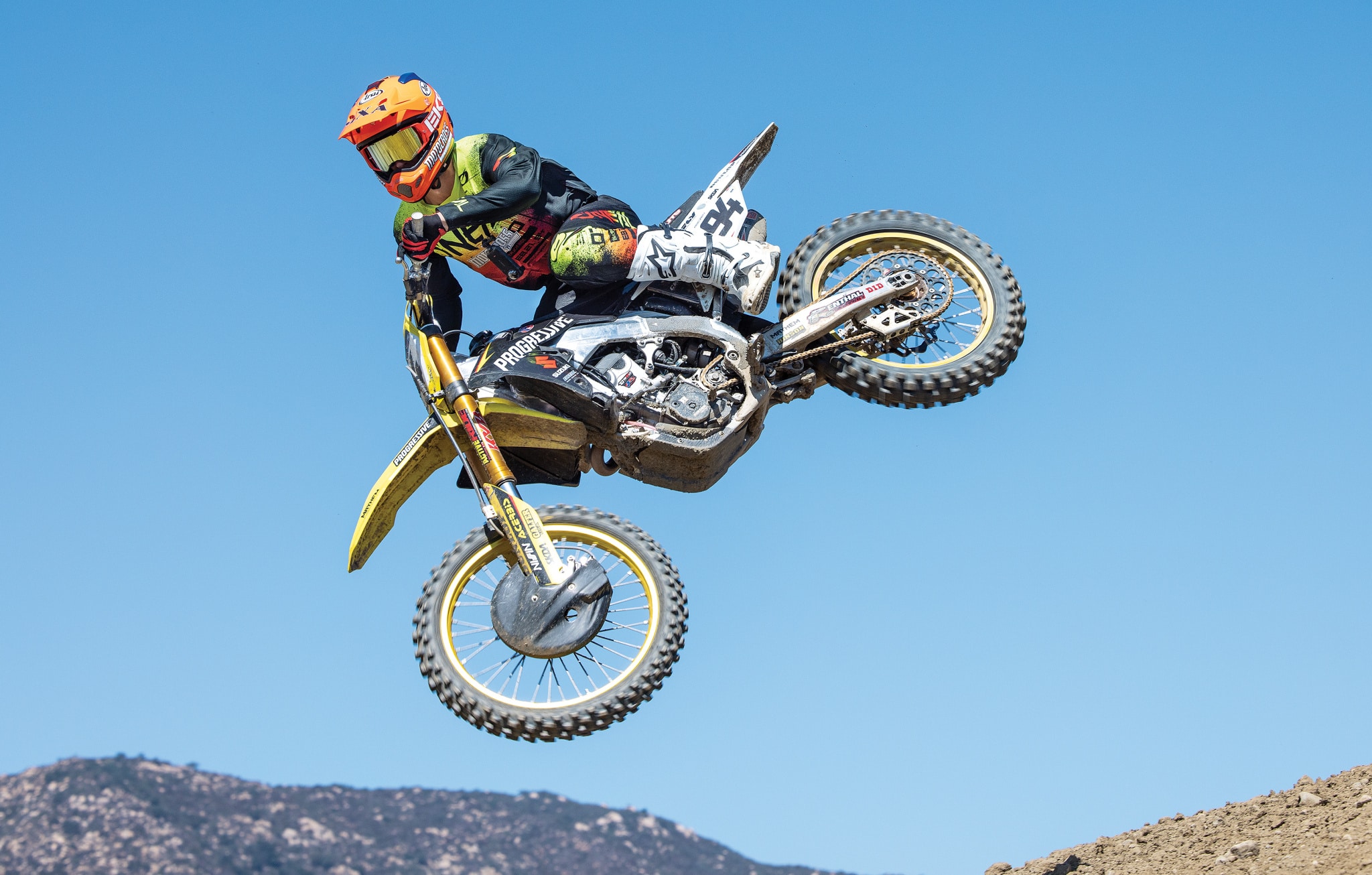
WHAT’S DONE TO THE ENGINE?
Jamie Ellis of Twisted Development is the man behind the RM-Z450 engines that the HEP Suzuki team runs. Jamie has a wealth of knowledge with this powerplant, dating back to the days when he was the engine builder for the Rockstar Suzuki team. Davi Millsaps won the 2013 Anaheim 1 450 Supercross and the 2013 San Diego Supercross on Jamie’s engine package. Of course, Jamie is busy building engines and Vortex ECUs for other top-level teams and everyday riders at Twisted Development, so Dave Dye, the team’s in-house engine builder, has teamed up with Jamie and works as an extension of him to keep the HEP engines running strong.
The Suzuki RM-Z450 engine hasn’t changed much since Jamie was building Davi Millsaps’ engines back in 2013, so Jamie knows this platform well. Jamie uses Crank Works to balance and polish the crankshaft to offset the weight of the Twisted Development-spec JE piston. Crank Works also makes the custom connecting rod out of aerospace-grade material, all contributing to smooth power with little vibration. Other engine notes: HEP uses VP Pro6 fuel in Supercross and Pro6-HT (hot-temperature) fuel outdoors. The cylinder head has been welded to fit with the custom cams and low-compression combustion chamber (per Kenny’s request). The HEP Suzuki team ran Yoshimura exhausts before Ken, but he brought Pro Circuit exhausts with him to the team.
To put power to the ground, Ken uses a Hinson BTL slipper clutch. This idea came from Dave Dye, and it took some convincing for Ken to try it, but now he won’t ride without it. Freddie Noren and Kyle Chisholm both switched to the BTL slipper for outdoors and the SMX races, following Kenny’s lead. There is also a Boyesen Supercool water pump, and Hinson clutch and ignition cover. Works Connection supplied the Pro Launch starting device and throttle tube. They added a hot-start switch for quick-kick re-fires, and the team uses DT1 air filters with the wire mesh screen removed from the filter cage.
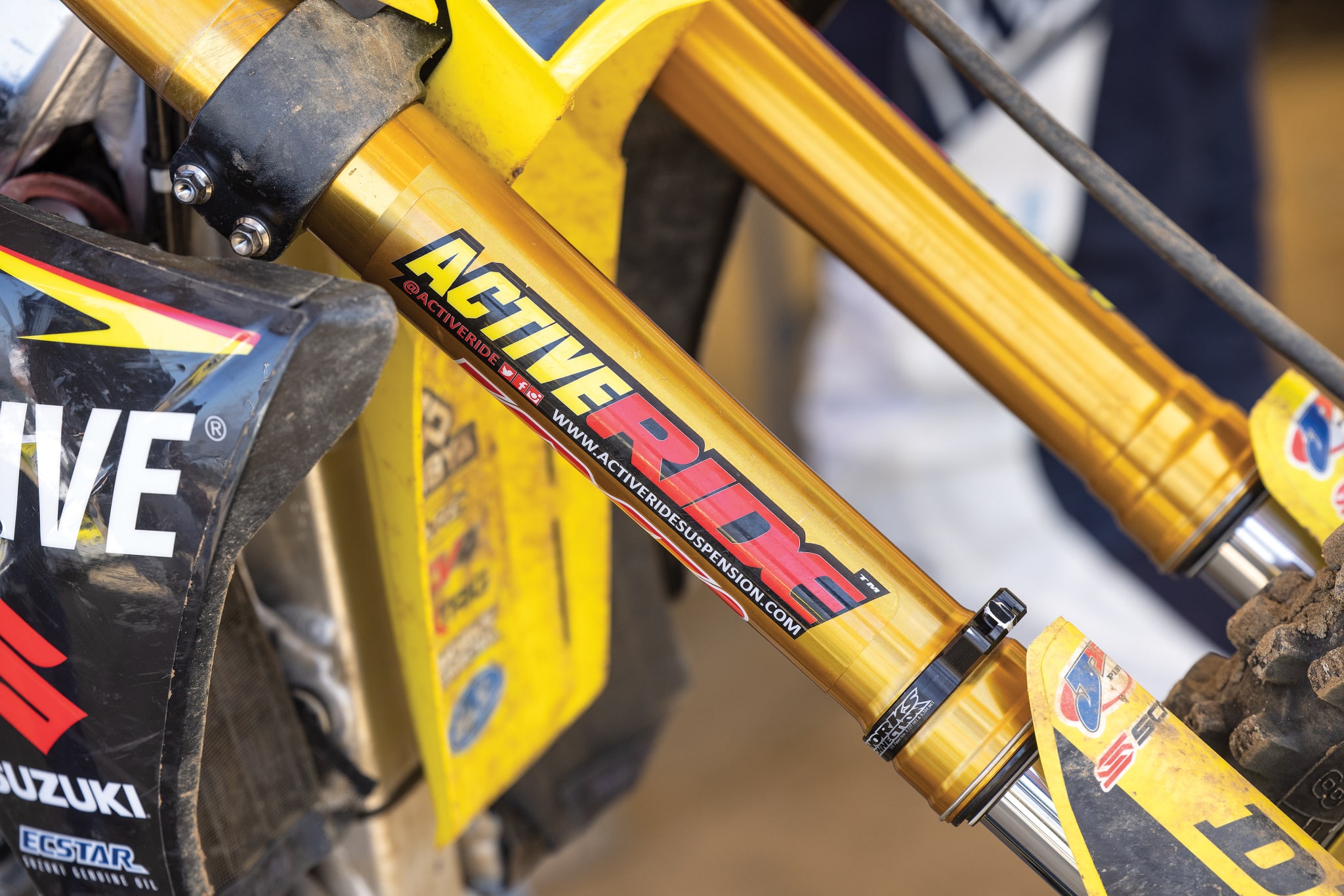
HOW WERE THE ERGONOMICS?
Ergonomically, his handlebars and levers were comfortably positioned. The bars followed the angle of the forks, and the levers weren’t too high or low. Kenny uses Scar Racing titanium footpegs, which are nice and sharp. The weirdest aspect of his controls was the rear brake pedal. It’s positioned crazy high, and the mechanics explained that he likes to hook his boot underneath the pedal to pull up on it. The lowered subframe was a nice touch, giving the bike a more balanced feel and lower rear end.
TO PUT POWER TO THE GROUND, KEN USES A HINSON BTL SLIPPER CLUTCH. THIS IDEA CAME FROM DAVE DYE, AND IT TOOK SOME CONVINCING FOR KEN TO TRY IT, BUT NOW HE WON’T RIDE WITHOUT IT.
How did it handle? Describing his bike in one word, it was stable. The HEP Suzuki team left the bike dirty from the Los Angeles Coliseum SuperMotocross finale, but they did switch out the Supercross suspension he used there (with Showa A-kit spring forks) for his Kayaba PSF-1 air fork-equipped outdoor suspension. Kenny ran this exact outdoor suspension at the Charlotte SuperMotocross playoff number two race when he went 3-1 for second overall behind Jett Lawrence, and we were very glad to have it.
The bike was balanced, and the suspension held up strong at the top of the stroke while remaining plush through the mid-stroke. As you’d expect, it was the best suspension we’ve ever tried on a Suzuki RM-Z450. It was stiff enough to overshoot, case or flat-land any jump at Pala Raceway without blinking an eye, and it was soft enough to corner like a champion and soak up chatter bumps without rattling our teeth loose.
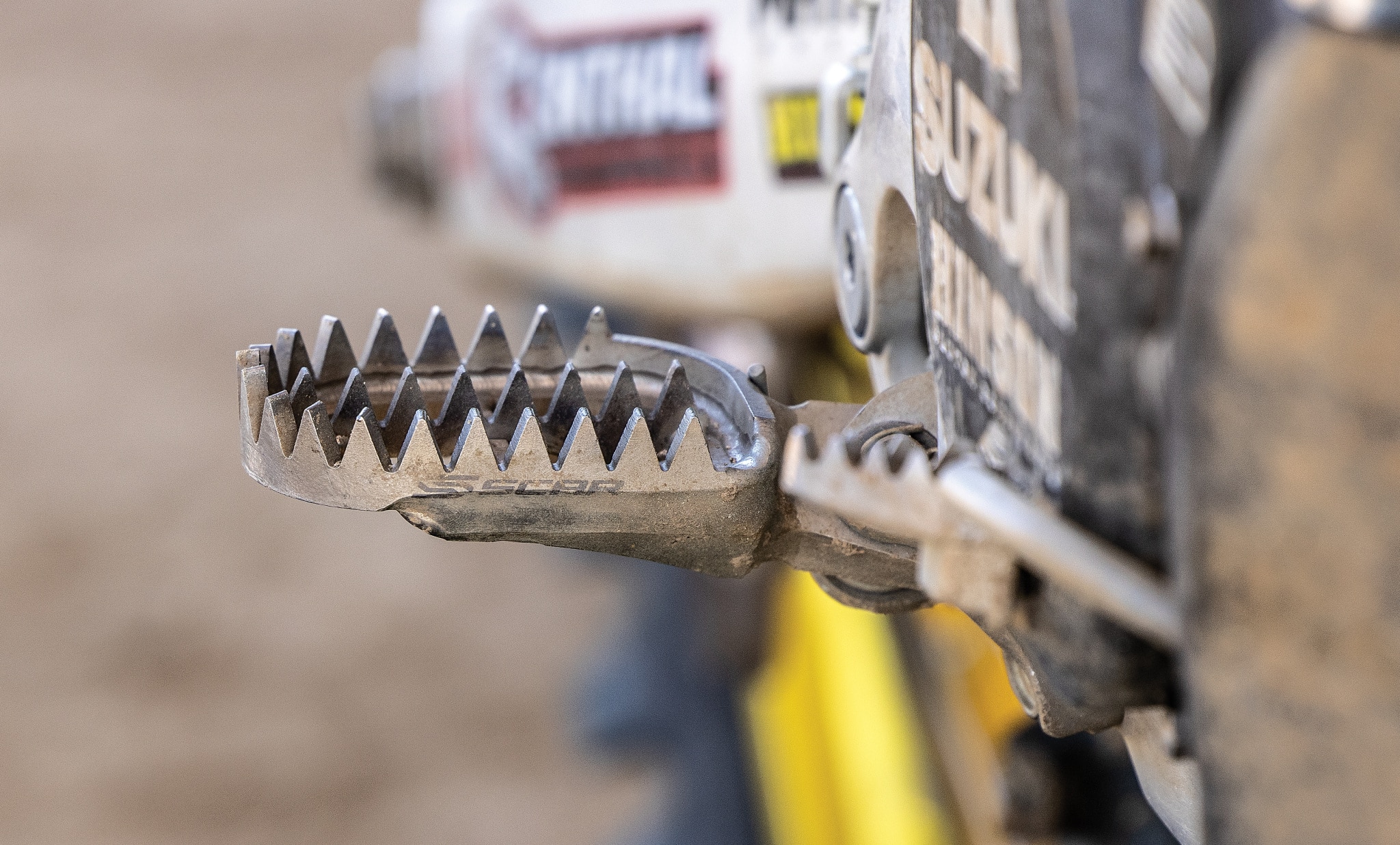
Riding Ken’s bike back to back with a stock RM-Z450 really opened our eyes to the benefits of a factory bike. On the stock bike, if you applied too much pressure to the front brake in rutted corners, it would upset the front end. On Kenny’s bike, the combination of A-kit forks and a factory Nissin front brake created ultimate traction on the front wheel. A rider of Kenny’s caliber relies heavily on his front brake and forks, but his setup was even more important than expected because of the Hinson BTL slipper clutch. The slipper is more of a chassis mod than an engine mod because it affects how the bike rolls into turns. As soon as you chop the throttle, the crank begins to slow, but the inertia from the rear wheel is still driving the bike forward, putting back torque on the clutch, which is then disengaged by the Hinson back-torque limiter (BTL), allowing the bike to freewheel until you get back on the gas. No, it’s not an automatic clutch, because once the crank and rear-wheel inertia match up again, the clutch is engaged and you can stall the engine.
The stock Suzuki RM-Z450 has more engine braking than the rest of the “Big Seven” manufacturers’ models, and the Hinson slipper clutch, along with ECU mapping from Twisted Development, allowed Kenny’s ride to freewheel into corners more like a two-stroke. Also, because the clutch is slightly heavier than a standard clutch, it helped create linear power down low, which is another feature Kenny likes.
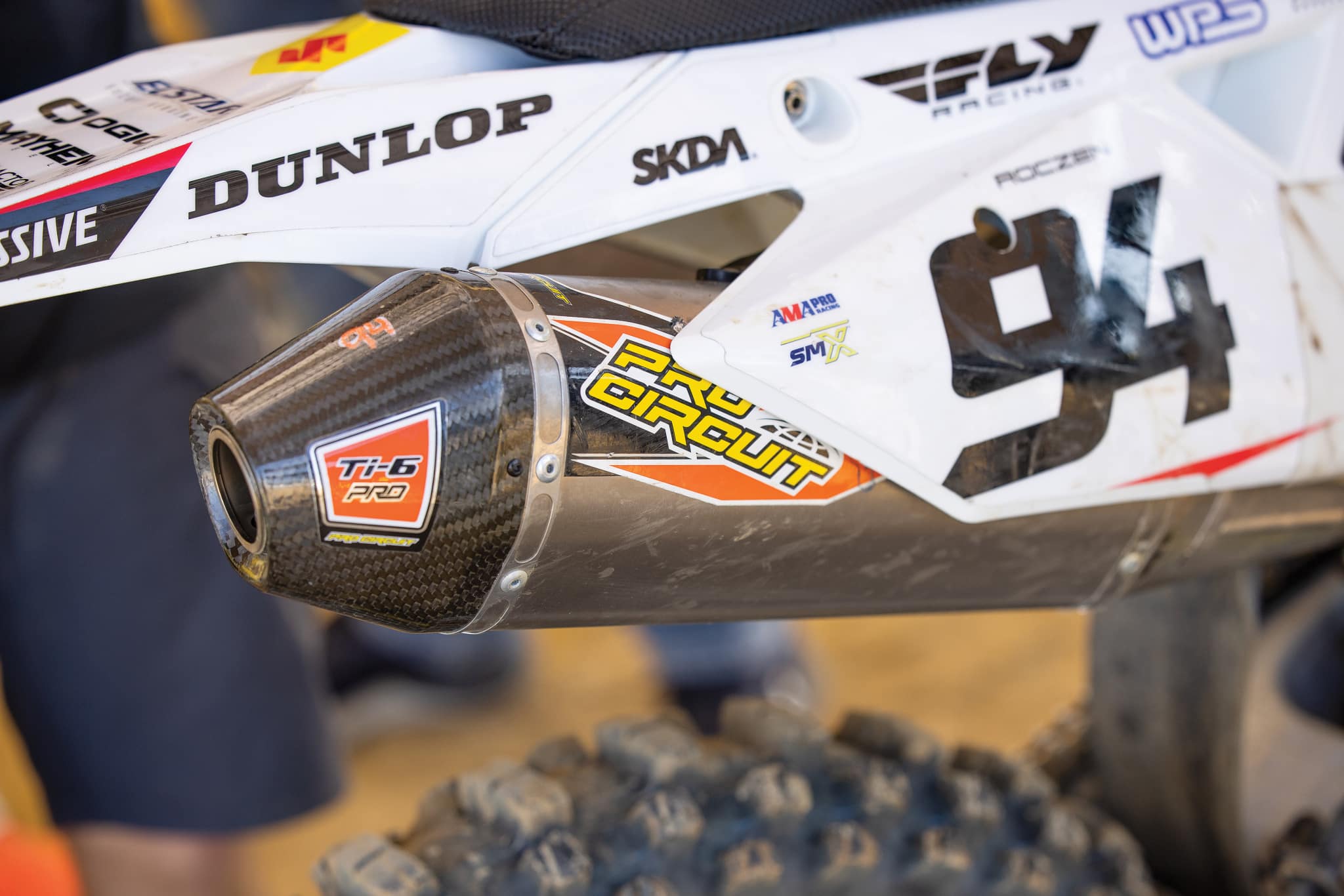
HOW DID IT RUN?
In one word, smooth. The power was positioned more in the low-to-mid range, but it wasn’t hard-hitting or abrupt. It rolled into the power with a linear pull. Surprisingly, it didn’t like to be revved high in the rpm. It could go there if needed, but it did its best work in the low-to-mid range. This engine package makes sense when you pay attention to Ken’s riding style. He’s very smooth. He doesn’t rev too high, and he doesn’t like to make mistakes or let his bike get out of control (i.e., Bam Bam). Ken is a very technical rider who is light on the footpegs and smooth on the throttle. Don’t get us wrong, his bike revved much higher and smoother than a stock RM-Z450, but this platform doesn’t like to be revved in comparison to Yamaha’s or KTM’s engines, so even though it was vastly improved over stock, it didn’t feel like a blue or orange bike in the high-rpm range. Our three test riders loved the engine character and didn’t want to let go of Kenny’s super-soft Renthal grips to share the bike.
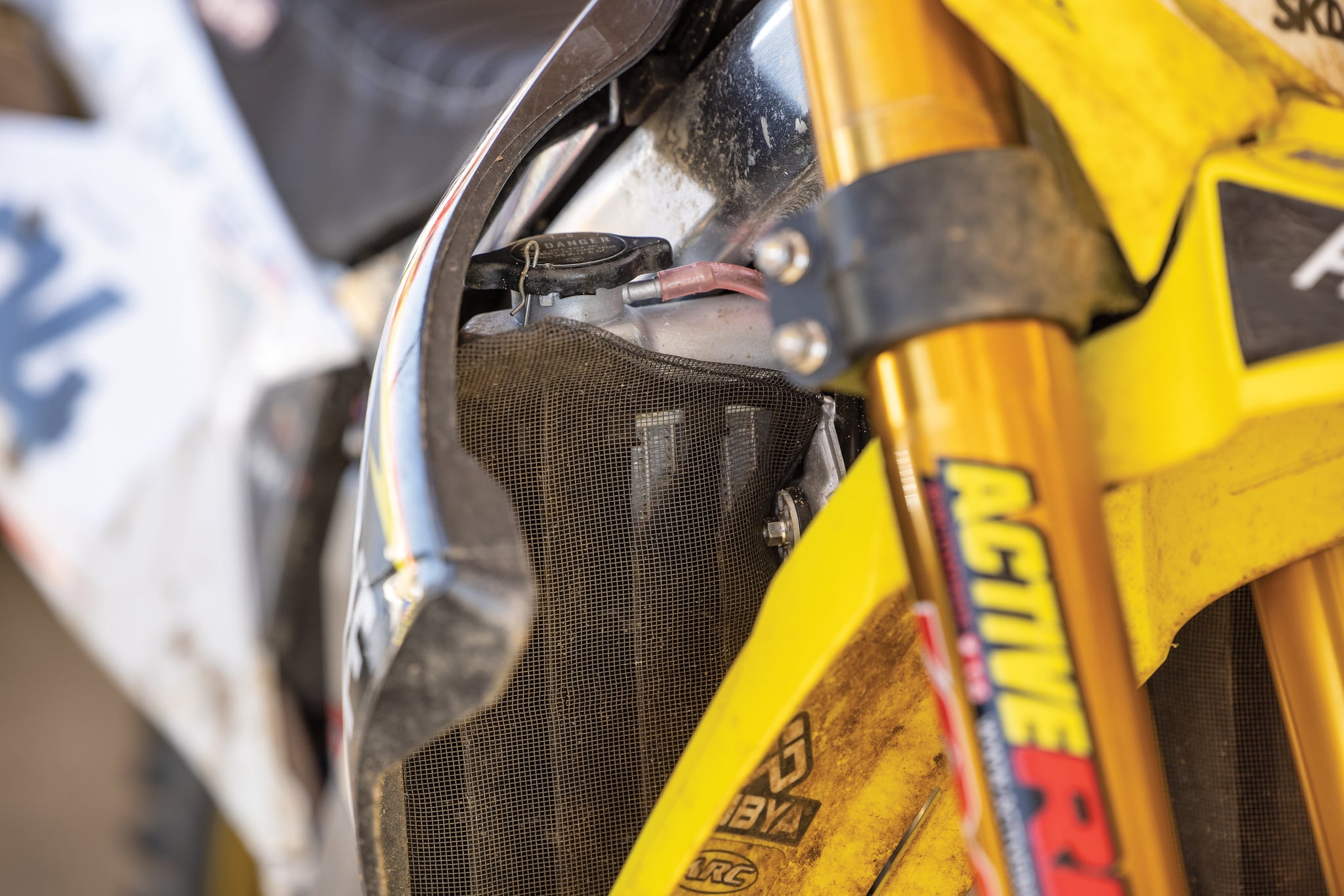
OVERALL, HOW WAS IT?
Although this bike isn’t as exotic as it could be, Larry Brooks has combed through every detail of this bike, ensuring no stone was left unturned. Of course, they tried different triple clamps, bar mounts, axles and linkages, but Ken preferred stock. In the end, the effort to switch from Factory Honda to a new and unproven team less than two months before Anaheim 1 turned into a Cinderella story. Ken was able to win multiple times, first at the Indianapolis Supercross and then at the Motocross des Nations in France when he won the overall in the MXGP class. Plus, he almost won the SuperMotocross Playoff title at the L.A. Coliseum where he pressured Jett Lawrence for the win down to the final laps of the second moto.
MXA goes back a long way with Larry Brooks to the time when he was an AMA Pro and an MXA test rider, testing stock production bikes and factory bikes for the magazine. Since then, he’s managed multiple top-level teams and worked with everyone from Jeremy McGrath to James Stewart and Chad Reed. He was nervous about bringing Ken to this unproven team, but it turned out to be a match made in heaven.


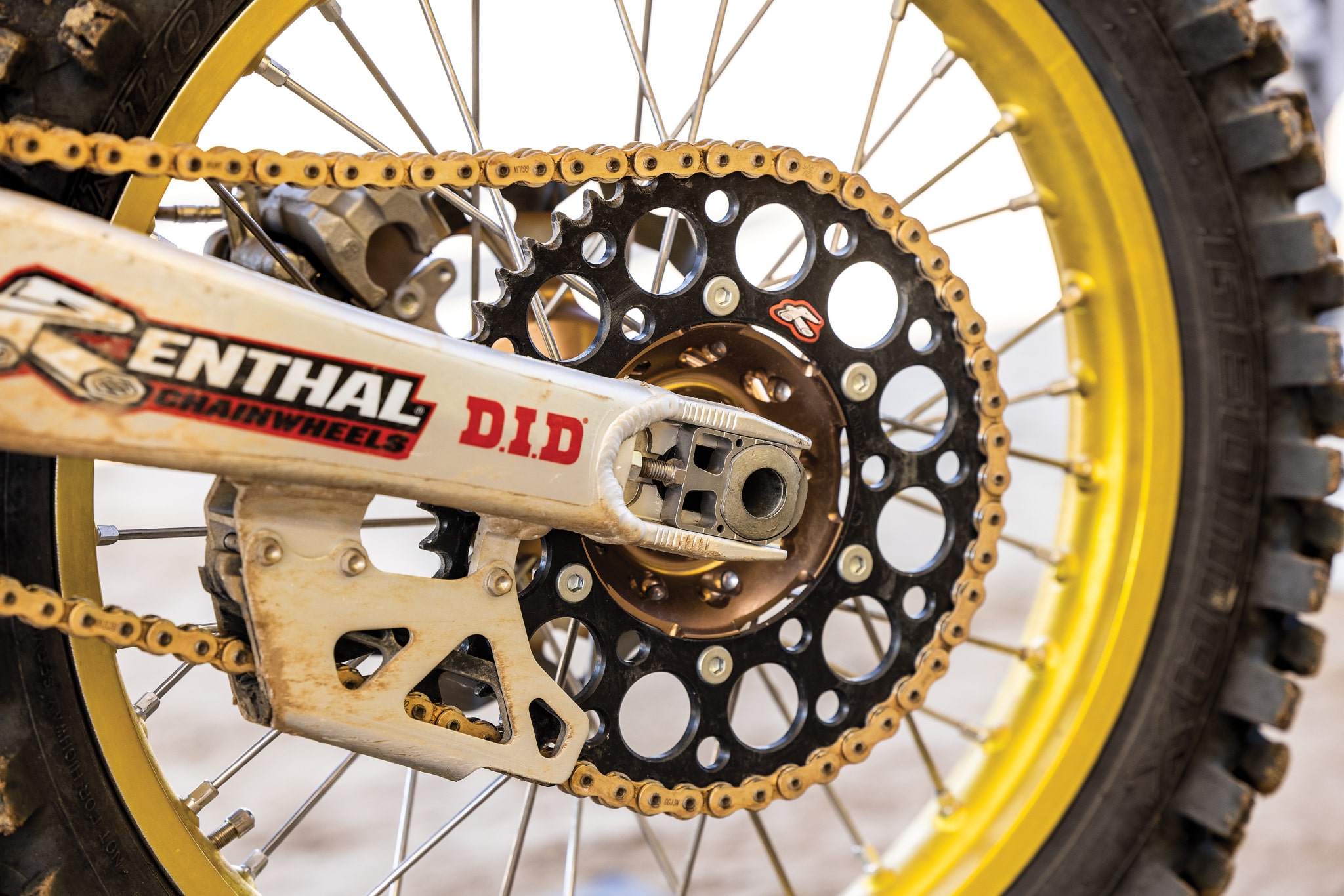




Comments are closed.